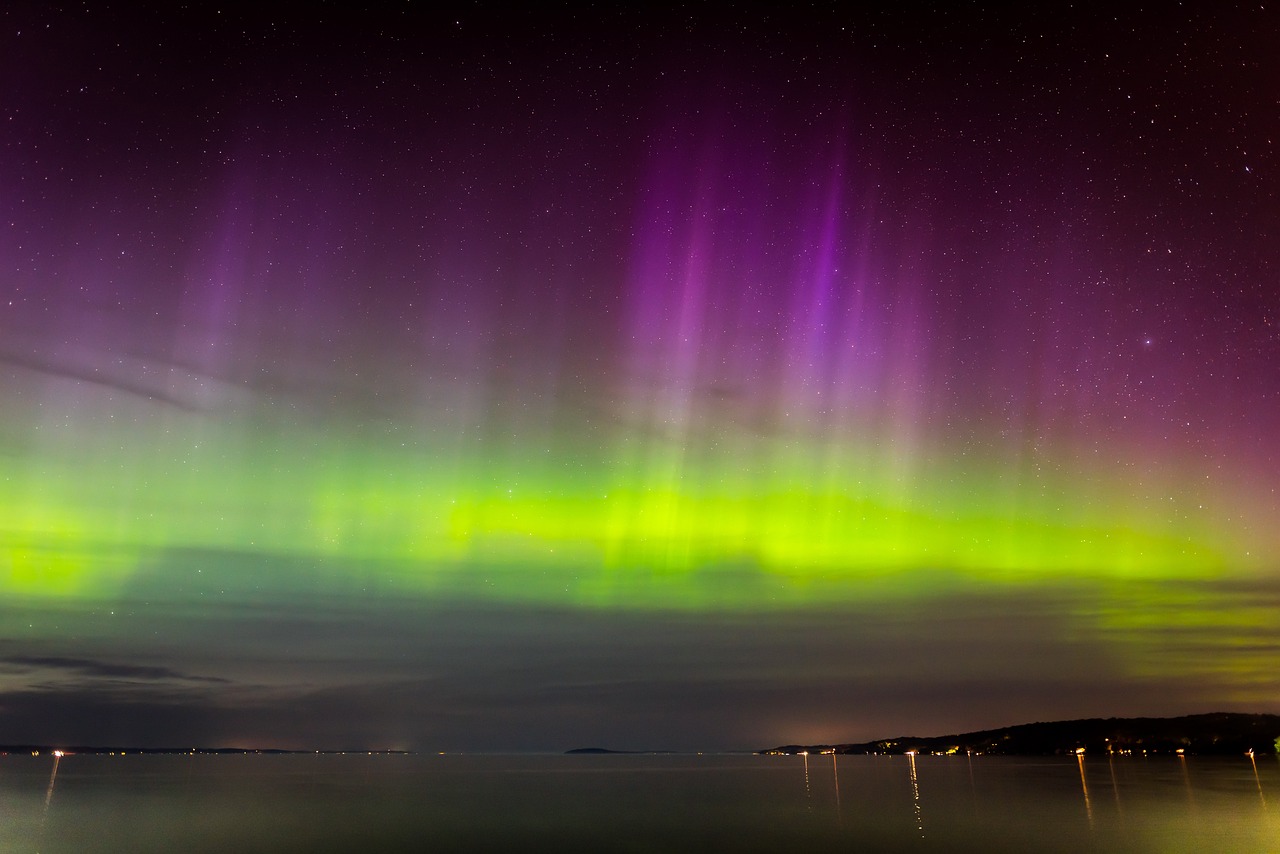The Northern Lights, an extraordinary celestial phenomenon, are a fascinating sight. But why are they mostly green?
The Northern Lights (Aurora borealis) in the northern hemisphere and the Southern Lights (Aurora australis) in the southern hemisphere are spectacular natural phenomena that occur at night. They are characterized by vivid, colorful, and wavy light trails in the sky. While their beauty leaves you speechless, one question remains unanswered. Why are they mostly green?
They are not just green.
This natural phenomenon occurs particularly frequently near the poles. In the northern hemisphere, you’re likelier to see an aurora dancing across the sky in northern Canada, Greenland, Iceland and Finland. Although rarer, it is not impossible to see them at lower latitudes.
While green is most commonly associated with these phenomena, the many photos reported also show red, pink and even purple auroras. A coloration that is closely related to the gases in the Earth’s atmosphere. As magical and enchanting as they may seem, there is a rational and scientific explanation for the auroras.
Thanks to the sun
Solar flares and winds cause the aurora, which results from a collision between stellar matter (electrons and protons) and the gases in our planet’s upper atmosphere, as the Canadian Space Agency explains. And if auroras usually look like green bands floating idly in the sky, this is mainly due to the presence of numerous oxygen atoms. They are located between 100 and 300 km above the earth’s surface.
The red hue is released at altitudes of 300–600 km. Because our eyes cannot distinguish this color on the surface of the earth, we frequently fail to notice it. The presence of nitrogen molecules produces pink-colored auroras. And finally, hydrogen and helium molecules produce a luminous blue and purple phenomenon. They are also extraordinary and challenging to see with the naked eye.
To have the best chance of observing this unique phenomenon, experts recommend hunting for them in the Northern Hemisphere regions between September 21 and March 21, when the nights are at their longest. To observe the auroras in the best possible conditions, you need a clear night. Another important piece of advice is to look north; there is a reason the Northern Lights are so named.
- source: gentside.de/picture: Bild von Jason Gillman auf Pixabay
This post has already been read 4837 times!



